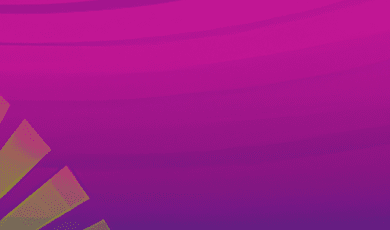
In today’s globalized landscape, medical conferences act as vital platforms for sharing the latest research, groundbreaking therapies, and innovative approaches to health. Nowhere is this more apparent than in the evolving realm of sexual health, where art and creative expression increasingly shape the way we discuss and understand intimate wellbeing. However, one profound barrier remains: language access. Without clear communication, even the most impactful ideas in sexual health can be lost—or worse, misrepresented—when shared across language divides.
As the popularity of new treatments and sexual health breakthroughs grows, especially those presented through artistic mediums, ensuring meaningful participation for all attendees is essential. This is where language interpretation becomes not just helpful, but absolutely critical.
In this post, we delve into why interpretation services—spanning on site interpretation services, over the phone interpretation services, and remote interpretation services—are a foundation for equity and progress at medical conferences, particularly those centered on sexual health and the transformative power of art.
Main Research: The Role of Interpretation Services in Medical and Sexual Health Conferences
1. The Diversity of Modern Medical Conferences
Medical conferences have evolved beyond traditional lectures; they now incorporate art installations, interactive workshops, and multimedia presentations, especially in fields like sexual health that benefit from creative exploration. The audience and presenters hail from all corners of the globe, representing diverse sexual identities, cultural backgrounds, and languages.
When sexual health topics are treated through art—performance, photography, mixed media—subtle nuances and cultural references can be challenging even for native speakers. For international attendees or presenters, language barriers become even more pronounced, risking the erasure of marginalized voices or key discoveries.
At this intersection, interpretation services ensure everyone can engage fully, from appreciating avant-garde art on sexual health to understanding the complex science behind new pharmaceuticals or treatments.
2. How Interpretation Services Bridge Language Divides
There are several types of interpretation services, each tailored to specific needs within a conference environment:
- On site interpretation services: On site interpreters provide real-time linguistic support in person, moving between breakout sessions, workshops, and exhibitions. Their presence is invaluable for impromptu discussions on cutting-edge art installations or live panel Q&As in sexual health.
- Over the phone interpretation services: For conferences employing hybrid or remote participation, over the phone interpretation services connect medical experts and artists with interpreters via secure phone lines, breaking down barriers in networking events or personal consultations.
- Remote interpretation services: As virtual and hybrid conferences become common—especially post-pandemic—remote interpretation services offer seamless multilingual engagement for live-streamed performances, panel talks, and even interactive digital art experiences.
These services not only facilitate basic understanding, but lay the groundwork for authentic connection, enabling participants to actively question, critique, and collaborate on new ideas in sexual health art and science.
3. The Importance of Language Equity in Sexual Health Communication
Language access isn’t simply a matter of logistics—it's a question of justice, inclusion, and public health. Sexual health has long been encumbered by stigma and misinformation, making nuanced explanation and confidentiality paramount. When medical data, research on new pharmaceuticals, or the meaning behind provocative art pieces are lost in translation, critical context and sensitivity can vanish, hindering understanding or even causing harm.
Moreover, for communities whose first language isn’t English, interpretation at conferences empowers participation, builds professional networks, and gives voice to vital experiences—such as the effectiveness of new sexual health pills in different cultural or demographic contexts. Read more here: Interpretation and Interpreting Services: A Complete Guide
Artistic presentations challenge established norms and offer new insights into sexual wellbeing, but only if everyone—regardless of language—can contribute to the conversation. This is indispensable for globally relevant sexual health progress.
4. Real-World Impact: New Sexual Health Pills and Artistic Advocacy
The recent wave of new pills for sexual health—from PrEP for HIV prevention to drugs improving sexual function—has sparked both hope and debate. Artists are increasingly engaging in advocacy, using installations or performance to demystify these advances and combat stigma. Imagine a conference where a performance piece dramatizes the social impact of a new medication. Without interpretation, non-English-speaking attendees may miss out entirely, or worse, misunderstand complex issues like side effects, accessibility, or cultural perception.
In such settings, on site interpretation services support dynamic engagement, allowing real-time responses and questions. Remote interpretation services and over the phone interpretation services further extend reach, ensuring follow-up conversations and digital workshops are as inclusive as possible.
Conclusion: The Art of Communication Is the Heart of Progress
Sexual health, especially when explored through the arts, inspires dialogue, breaks down taboos, and fosters innovation in medical science. Yet for these benefits to ripple outward—improving public health outcomes, fueling creative research, and challenging harmful norms—language access must be a priority at every medical and artistic gathering.
By integrating on site interpretation services, embracing over the phone interpretation services, and leveraging remote interpretation services, conference organizers can open doors for truly global participation in sexual health conversations.
The future of medicine—which must be inclusive and imaginative—depends on our ability to communicate authentically, transcending language and cultural barriers. Whether unveiling the latest scientific research or sharing art that challenges the status quo, let’s ensure every voice can be heard and understood. Your next breakthrough just might depend on it.







